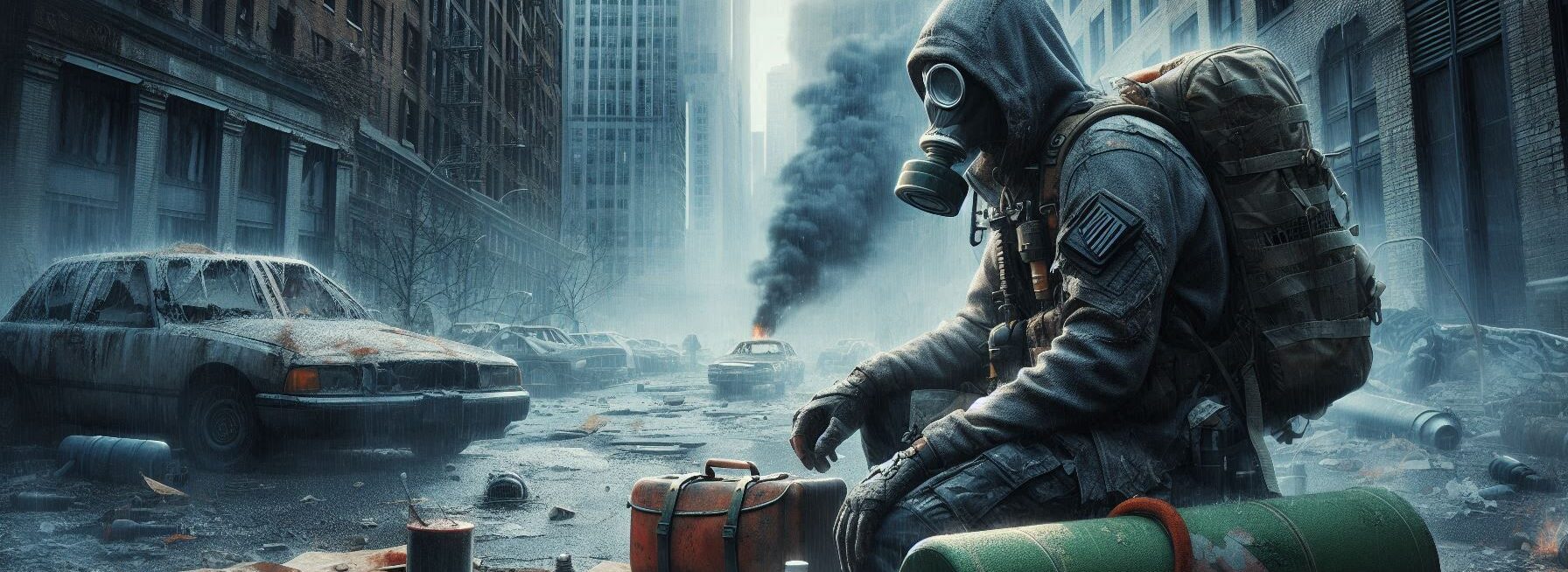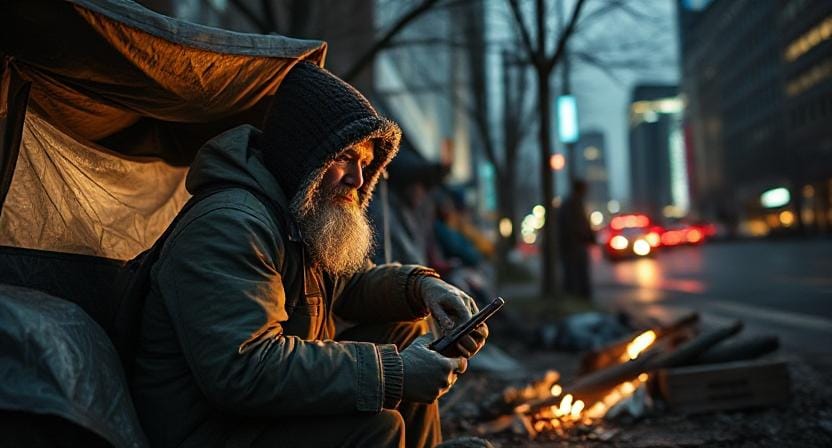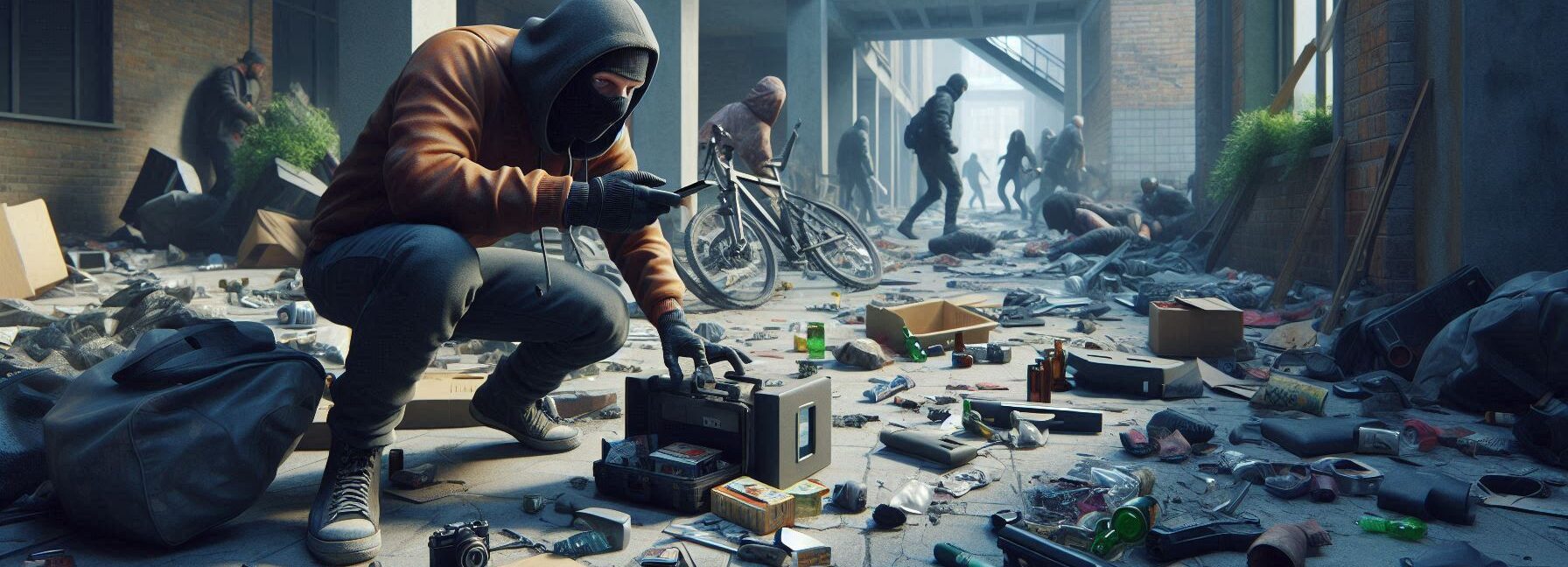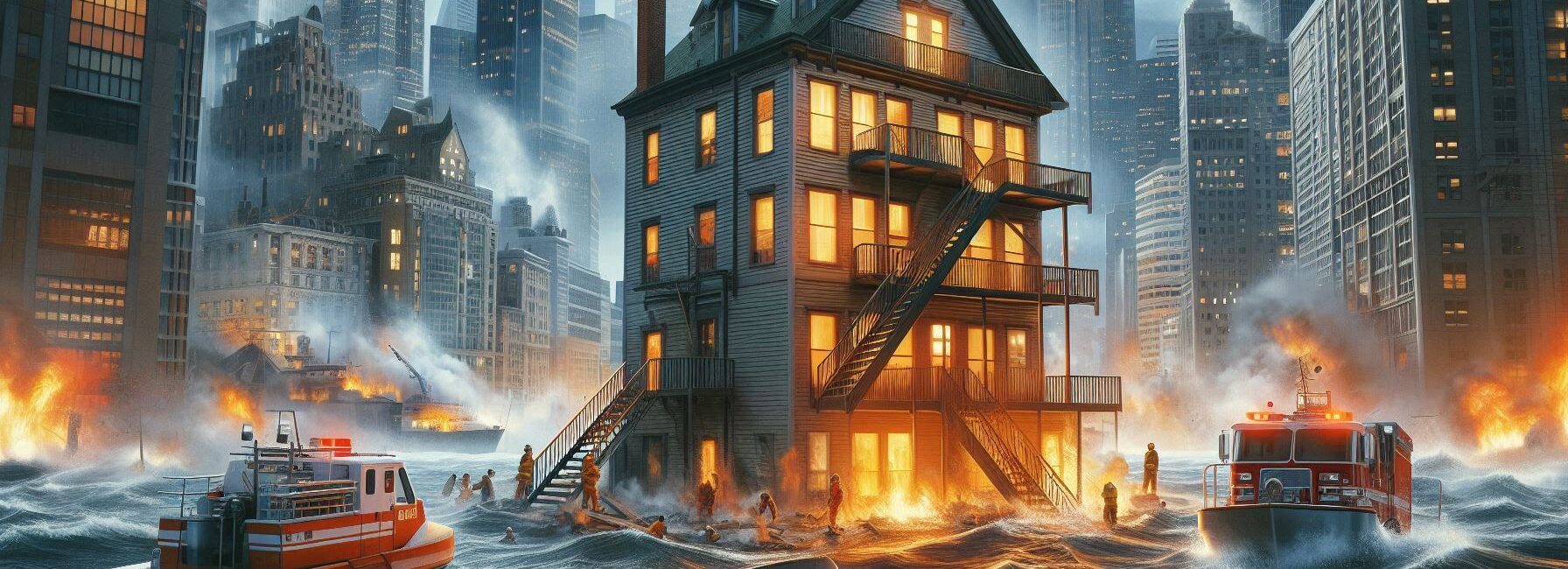Please Note: This post may contain affiliate links. If you click one of them, we may receive a commission at no extra cost to you. As an Amazon Associate, I earn from qualifying purchases.
Last Updated on November 2, 2025 by Kevin Collier

Top Takeaways and Key Concepts
– Familiarize yourself with your city's layout to navigate efficiently during emergencies.
– Keep a basic emergency kit ready with food, water, and first aid supplies.
– Establish communication plans with family and friends for emergencies.
– Stay informed about local disaster risks and warning systems.
– Find safe locations for shelter and storage in your urban area.
You are at your favorite coffee shop, sipping a steaming latte, when then bang! The ground shakes like it's trying out for a catastrophe movie. Yikes, huh?
Welcome to living in the city! Things may get crazy in the city. Earthquakes, hurricanes, or, let's be honest, maybe even that zombie apocalypse we all laugh about but kind of think may happen. It's really vital to be ready.
So, let's talk about how to go from living in a metropolis to being a survival expert when something unexpected strikes.
First of all, a good emergency pack is your best friend. Get a strong backpack and put everything you need in it. A flashlight, some first-aid materials, snacks, and water. If you had to spend the night outside, what would you need? It doesn't have to be big. Exactly what you need to be safe.
Now, think about how you would get home if the train broke down. Know where you're going. You can either write it down on paper or use your phone to mark the path. You never know when you might need to walk a little. Things will seem less daunting if you take a little time to plan.
Also, talk to your neighbors. You are all in this together! Give out emergency numbers or maybe start a small organization in your neighborhood. It's comforting to know that you can count on a few pleasant people. You'll be ready for everything that comes your way.
Know how to stay up to date. Make sure your phone includes apps that let you know about bad weather. You might need to know what's going on outside at times. Knowing what's going on can help you make good choices.
When things get busy, try to keep calm. Take a deep breath if the ground shakes again. It's normal to feel jittery. Just remember that you're ready. You have your gear. You know how to go home.
*** Shop for Survival Gear - Tools - Kits ***
Survival Gear - Bags and Backpacks - Knives - Boots/Footwear - Communication
Outdoor Cooking - Gloves - Hydration - Dry Boxes - Water Filtration Systems
Tents - Sleeping Bags - First Aid Kits - Multi-Tools - Flashlights - Fire Starters
Navigation - Survival Food - Night Vision - Headlamps - Stun Guns - Binoculars
And when things calm down, don't forget to talk to your family and friends. Send them a text or phone them. Knowing that everyone is okay helps soothe those nerves. You can also tell your adventure stories later!
Living in the city can be crazy, but you're ready for everything that comes your way. So, smile and take a sip of that latte. You're well on your way to become a survival superstar, and you can do it! ☕️💪🌆
Understanding Your Environment: The Concrete Jungle

First things first: it's really important to know what's going on around you. Cities are more than simply concrete and steel; they may also be dangerous. Think about it: during an earthquake, skyscrapers can turn into huge paperweights, and flooded streets can turn into rivers in the modern world.
It's like being in one of those action movies where everything goes wrong, but without the awesome special effects.
Take a moment to get to know your surroundings. Be aware of the exits in your building and have a strategy on how to get out fast if you need to. I once was locked in an elevator during a fire drill, and it wasn't fun at all. No, I didn't get out by pushing every button. Knowing where to go makes you feel more sure of yourself, so plan safe routes ahead of time.
Also think about what resources are close by, such grocery stores, parks with fresh water, and public transportation choices if you need to go quickly. By the way, it could be helpful to know where the nearest pizza place is—not for survival, but because who wouldn't want pizza during the end of the world?
Stocking Up on Supplies: The Urban Pantry

Now that you know your environment better than your morning commute route, let’s talk supplies! In any disaster scenario, having enough food and water is essential. But here’s the kicker—you don’t need to stockpile enough canned beans to last until 2050!
Start by assessing what you already have at home. Canned goods? Check! Instant ramen noodles? Double check! Just remember that while ramen may be delicious (and nostalgic), it won’t provide all the nutrients you need unless you want scurvy as part of your post-apocalyptic look.
Consider creating an emergency supply kit containing non-perishable foods like granola bars and dried fruits along with bottled water (at least one gallon per person per day).
And speaking of which—don’t forget about those furry friends! If you have pets, make sure their supplies are included too; nothing says “I’m unprepared” quite like realizing you forgot Fido's kibble while trying to survive.
Communication: Staying Connected When Chaos Strikes

In our tech-savvy world today, communication plays an important role—even during disasters. Let’s face it; yelling across rooftops isn’t going to cut it when you're trying to coordinate with family or friends scattered throughout the city.
Have backup plans ready! Consider investing in walkie-talkies or two-way radios since cell towers may go down faster than my willpower around chocolate cake. Honestly though—it might be worth practicing using them now so everyone knows how they work before chaos ensues.
Additionally—and this might sound old-fashioned—keep physical copies of important documents such as IDs and medical records stored safely away from home but accessible if needed later on. This way you'll avoid scrambling through digital files when time is of the essence!
Finding Shelter: Home Sweet (Temporary) Home

When disaster strikes unexpectedly outside your front door—or inside it for that matter—the next step is finding shelter if yours becomes unsafe or inaccessible due to damage caused by whatever calamity has occurred.
Look around; urban areas often have designated shelters set up after major events where people can seek refuge temporarily until things settle down again (hopefully without encountering any angry raccoons looking for snacks).
If possible though—try staying with trusted neighbors who might also have resources available instead of heading straight towards large crowds!
And let’s see…if worse comes to worst? An abandoned building might serve as temporary shelter—but please ensure it's structurally sound first! Trust me; sleeping under falling debris does not lead toward restful nights nor peaceful dreams about winning the lottery post-apocalypse!
Navigating Through Chaos: Stay Calm and Keep Moving
Finally—and perhaps most importantly—stay calm amid chaos! Panic rarely leads anywhere good except maybe stumbling over someone else panicking worse than you do (which isn’t ideal either). Keeping level-headed helps maintain clarity on decisions made regarding safety measures taken afterward.
If you're caught outside during an urban disaster scenario? Move away from buildings and power lines while avoiding crowded areas full of confused citizens running amok like headless chickens searching for safety among panic-stricken masses!
All things considered—you’ll want something resembling common sense mixed with intuition guiding each step taken toward finding safety amidst uncertainty ahead…and maybe some luck sprinkled throughout too!
Frequently Asked Questions
What should I include in an urban emergency kit?
Include water, non-perishable foods, a flashlight, first aid supplies, and basic tools to help you handle common disaster situations.
Why is knowing the city layout important?
Understanding routes, shortcuts, and emergency exits helps you navigate quickly if regular transportation is disrupted.
How can I stay informed during an urban disaster?
Use emergency alert apps, radio broadcasts, or official notifications to receive real-time updates and safety instructions.
What communication plans should I have?
Establish contact points, backup messaging options, and clear meeting locations in case normal communication systems fail.
Where can I find safe shelter in a city emergency?
Identify strong structures, designated public shelters, or safe indoor locations away from hazards like falling debris.
How much food and water should I store?
Plan at least one gallon of water per person per day and enough food to sustain yourself for several days.
Are neighbors important in urban survival?
Yes, connecting with neighbors builds support networks and improves coordination when resources or information are limited.
Suggested External Resources:
Urban Survival Guide
https://www.survivalresources.com/urban-survival-guide
Emergency Preparedness Checklist
https://www.ready.gov/prepare
Disaster Survival Tips
https://www.redcross.org/get-help/how-to-prepare-for-emergencies.html

Kevin Collier is a seasoned survivalist and expert in prepping and homesteading, contributing to WiseSurvive.com. With a deep-rooted passion for self-sufficiency and outdoor survival skills, Kevin shares practical advice, strategies, and resources to help individuals prepare for any challenge. His informative articles cover a range of topics, from essential survival techniques to sustainable living practices, empowering readers to thrive in any situation. Whether you're a novice or a seasoned prepper, Kevin's insights will inspire you to take charge of your readiness and build resilience for the future.




